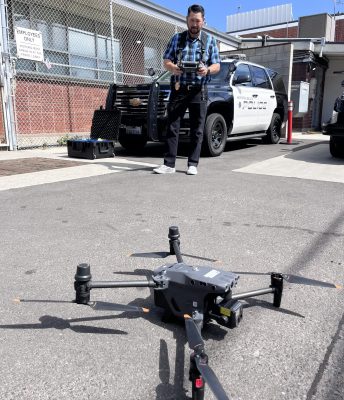Gone are the days of waiting in long lines at the bank just to cash a check. Banking has gone digital, and over the next decade, it’s going to get even smarter. From AI-powered assistants to fully digital banks, the way we manage money is evolving at lightning speed. So, what’s next? Let’s take a look at the trends shaping the future of smart banking and how they’ll impact your financial life.
Say Hello to Digital-Only Banks
Brick-and-mortar banks? They’re not going anywhere just yet, but digital-only banks are gaining serious traction. These online banks—also called neobanks or challenger banks—operate entirely without physical branches, offering everything through sleek, easy-to-use apps.
Why are they so popular? Simple. Lower fees, higher interest rates on savings, and faster, hassle-free transactions. Plus, without the overhead of physical locations, they can focus on improving customer experience and offering cutting-edge financial tools. Even traditional banks are taking notes and rolling out more digital services to keep up with this rapid shift.
AI and Automation Are Taking Over (In a Good Way)
Imagine a bank that knows what you need before you even ask. That’s the power of artificial intelligence (AI) in banking. AI-driven chatbots and virtual assistants are already handling customer inquiries, processing transactions, and even offering financial advice. But in the next decade, they’ll get even smarter.
AI will analyze your spending habits, predict upcoming bills, and offer personalized budgeting tips—all in real time. If you’re looking for an easy way to keep track of your spending and savings, using a budget planner app can help you stay on top of your financial goals. Need help investing? Robo-advisors will continue to refine their algorithms to offer better, more personalized investment strategies. Automation will take the guesswork out of managing your finances, making money management smoother and more efficient than ever.
Blockchain and Crypto: Not Just for Tech Geeks Anymore
Blockchain technology and cryptocurrencies aren’t just buzzwords anymore—they’re becoming an integral part of modern banking. Secure, transparent, and fast, blockchain-based transactions could eliminate the need for intermediaries, making payments and money transfers cheaper and more efficient.
Many banks are already experimenting with blockchain to improve security and speed up transactions. Cryptocurrencies, once considered a niche asset, are now being integrated into mainstream banking services. Expect to see more banks offering crypto wallets, allowing you to buy, sell, and store digital currencies alongside your regular accounts. Decentralized finance (DeFi) is also opening up new lending and borrowing opportunities without traditional banks acting as middlemen.
Security and Fraud Prevention Are Getting Smarter
As banking goes digital, security is more important than ever. Thankfully, future banking tech will make fraud prevention stronger and more intuitive.
Biometric authentication—think fingerprints, facial recognition, and even voice ID—will become the norm, making passwords a thing of the past. AI-driven fraud detection will monitor transactions in real time, identifying suspicious activity before it becomes a problem. And with quantum computing on the horizon, encryption methods will reach an entirely new level, making banking data safer than ever.
The Era of Contactless and Embedded Payments
Cash? Who needs it? Contactless payments have already changed the way we shop, but the next wave of payment technology will go even further. NFC-enabled cards, QR codes, and even wearable payment devices will make transactions effortless.
But that’s just the beginning. Embedded payments—where transactions happen seamlessly within apps or devices—will become more widespread. Picture ordering groceries through your smart fridge or paying for gas without pulling out your phone or card. Payments will be faster, smoother, and more integrated into everyday life than ever before.
Open Banking Will Give You More Control
Open banking is changing the way financial services interact with each other. By allowing banks and third-party financial apps to securely share data (with your permission, of course), open banking makes managing your finances easier and more streamlined.
You’ll be able to see all your accounts—savings, checking, loans, credit cards—in one place, no matter which bank they’re with. This will also allow for smarter financial planning, as AI-powered apps analyze your spending and offer real-time insights on saving, investing, and debt management. The future of banking isn’t just smart—it’s personal.
Banking Goes Green: The Rise of Sustainable Finance
Banking isn’t just about money—it’s about responsibility. As environmental concerns grow, banks are stepping up their game by investing in sustainability.
More banks are introducing green banking initiatives, such as offering eco-friendly investment options and supporting renewable energy projects. Digital banking also reduces the need for paper statements and in-person visits, cutting down on waste and emissions. Expect sustainability to become a key factor in how banks operate and how they attract socially conscious customers.
Big Data Will Make Banking More Personal
The future of banking is all about hyper-personalization. Thanks to big data, banks will analyze your financial behavior to offer customized recommendations tailored just for you.
From suggesting better savings plans to reminding you of upcoming bills, smart banking will make managing money feel effortless. Personalized insights will help you make better financial decisions, whether it’s budgeting, investing, or applying for loans. Banking won’t just be a service—it will be a financial assistant that knows your habits and helps you reach your goals.
Loans and Credit Are Getting an Upgrade
Getting a loan or applying for credit is about to get a lot easier—and fairer. AI-driven credit scoring will take a more holistic view of your financial behavior, looking beyond just your credit score. This means people with limited credit history, like young adults or freelancers, may have an easier time qualifying for loans.
Peer-to-peer lending and decentralized finance will also grow, offering more borrowing options outside of traditional banks. Plus, expect to see more ethical lending models, such as interest-free financing and community-based lending initiatives, giving people more access to fair financial services.
What’s Next?
The next decade will completely redefine what it means to bank. AI will automate financial management, blockchain will make transactions faster and safer, and open banking will give consumers more control than ever. Digital-only banks will challenge the traditional banking system, while sustainable finance will make responsible investing the norm.
As we move into a smarter, more connected financial future, one thing is clear: banking is evolving, and it’s evolving fast. Whether you’re a tech enthusiast or just someone looking for a simpler way to manage money, the future of smart banking promises convenience, security, and personalization like never before. So, are you ready for what’s next?










